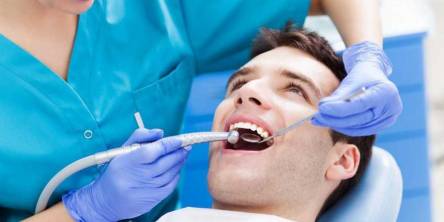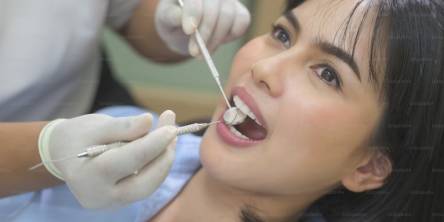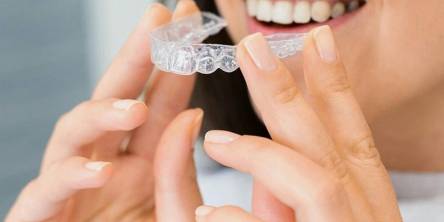6 Common Oral Issues That Are Caused by Poor Oral Hygiene

Maintaining proper oral hygiene is extremely important to keep your teeth and gums healthy. However, many people neglect proper tooth brushing and flossing. This can result in certain conditions that can affect your oral cavity. In this article, we have gathered six common oral issues that are caused by poor oral hygiene.
1. Tooth decay
Tooth decay, also known as caries and cavities, is a condition in which a hole occurs in the tooth. But the truth is that this hole can't develop on its own. It occurs when acids soften and eat away your tooth enamel. These acids are produced by bacteria that inhabit your oral cavity. So if you don't brush and floss your teeth properly, the number of bacteria in your mouth increases dramatically. To remove any bacteria from your mouth, you need to brush your teeth twice a day and use dental floss daily.
2. Bad breath
Bad breath, also called halitosis, is an extremely common issue that can be caused by many factors. The most common of them include the consumption of alcoholic drinks and smelly foods, problems with digestion, smoking, poor oral hygiene, and certain oral issues. As mentioned above, your mouth is full of bacteria. During their vital activity, these bacteria produce an unpleasant odor. Additionally, food particles can get stuck between your teeth and also cause bad breath.
3. Gum recession
Gum recession is a condition that occurs when your gums shrink and expose the roots of the tooth. This condition can lead to increased tooth sensitivity since the parts that become exposed are less protected. The most common causes of gum recession include poor oral hygiene, tobacco, and recreational drug use, aggressive tooth brushing, vitamin C deficiency, and gum disease. If left untreated, your teeth may completely lose their support and fall out. That's why it is essential to visit a dentist if you have receding gums.
4. Gum disease
Gum disease is a condition in which the bacteria overgrowth makes your gums infected and inflamed. The most common symptoms of gum disease are gum redness, swelling and bleeding, receding gums, gum pockets, loose teeth, pus between the teeth, and bad breath. Poor oral hygiene is deemed the most common cause of gum disease. However, there are certain risk factors like smoking, heredity, diabetes, and poor nutrition that can increase your chances of developing gum disease.
5. Enamel wear
Even though tooth enamel is deemed the hardest tissue in the human body, there are some factors that can make it wear out. With age, tooth enamel can become thinner. However, poor oral hygiene, aggressive tooth brushing, teeth grinding, and increased consumption of acidic foods and drinks can remove your tooth enamel. Symptoms of enamel wear include increased tooth sensitivity, chipped tooth enamel, and yellowish teeth. It is essential to cover the damaged teeth to ease your symptoms and prevent further wear out.
6. Tartar accumulation
Tartar is a solid deposit that occurs between the teeth or near the gum line when dental plaque hardens. In most cases, tartar develops when people don't maintain proper oral hygiene. However, smoking can also increase your risk of getting tartar. In addition to aesthetic issues, tartar accumulation can contribute to the development of gum disease since it creates a perfect environment for bacteria to live and multiply.
The bottom line
Indeed, poor oral hygiene can significantly affect your oral cavity. But you should also know that bacteria overgrowth in your mouth can also increase your risk of getting respiratory infections, diabetes type 2, Alzheimer's disease, stroke, and heart attack. Brushing your teeth in the morning and in the evening as well as using dental floss can help decrease the number of bacteria in your mouth and prevent the development of the aforementioned issues.
Similar Articles
Improve your oral hygiene with the Piksters Hydropik Water Flosser. Clean between teeth and gums easily with a powerful, gentle water stream.
Missing teeth affects much more than how your smile looks. They change how you chew, speak, and even how your jaw functions over time.
Teeth and gums form a complex system that functions daily and continuously. We often underestimate their importance until pain, sensitivity, or other unpleasant symptoms arise.
You take a sip of iced water, and suddenly, one tooth lights up with a sharp sting. That quick shock is more than annoying; it can change what you eat, how you drink, and even how you breathe in cold air.
In the past, correcting misaligned teeth meant committing to years of highly visible metal braces, diet restrictions, and frequent, sometimes uncomfortable, adjustments
Baby teeth can cause a lot of worry for parents, especially when things do not seem to happen on
Ever caught yourself hiding behind your hand during a good laugh? Or dodging the camera at family gatherings? Those small chips, stubborn stains, or awkward gaps in your teeth can chip away at your confidence year after year.
When most people think about straightening their teeth, they envision traditional metal braces. However, because of recent advances in orthodontics, there are now more discreet, pleasant, and efficient solutions available.
Healthy gums not only ensure a beautiful smile but are also essential for overall oral health. However, conditions often arise that require surgical intervention in addition to dental treatment.









